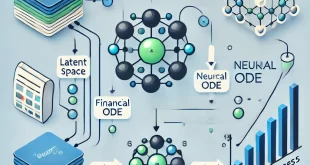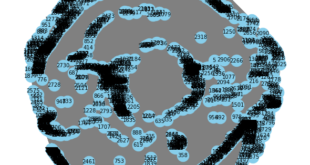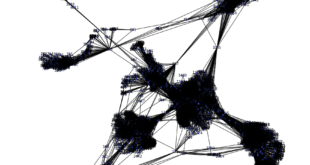Abstract
This study aims to develop a model for producing dynamic sequences that depend on latent space and Neural ODE, with applications in studying financial distress. By using an encoder to transform financial data into a latent representation, Neural ODE to analyze continuous financial dynamics, and a decoder to produce predictions, this study seeks to provide an effective way to predict financial distress.
1. Introduction
Financial distress is a big problem for companies in different industries. Predicting financial distress requires a good understanding of financial and historical dynamics. Deep learning models, like Neural ODE, can offer a new way to predict financial distress by processing data in an innovative way.
2. Theoretical Framework
2.1. Financial Distress
Financial distress means a company cannot pay its financial obligations. This situation can lead to the bankruptcy of the company, which needs continuous monitoring of financial performance.
2.2. Neural ODE
Neural ODE is a framework that uses ordinary differential equations to represent neural networks. This model allows for modeling the continuous dynamics of hidden states in neural networks, which provides a high ability to handle time-based data.
2.2.1. The Differential Equation
Neural ODE is represented by the equation:
3. Methodology
3.1. Data Preparation
A dataset containing multiple financial features, such as debts, revenues, and assets, was used. These features were analyzed and normalized using suitable statistical tools.
3.2. Encoder
The encoder is a neural network that aims to reduce the dimensions of input data and transform it into a latent representation. The encoder takes complex financial features and turns them into smaller vectors, making it easier for the Neural ODE model to handle them.
3.2.1. The Encoding Process
The encoding process starts by passing the features through several hidden layers. Each layer transforms the data using activation functions like ReLU, which helps introduce non-linearity into the model.
3.3. Ordinary Differential Equations (ODE)
Neural ODE calculates the continuous changes in the latent representation produced by the encoder. By solving the differential equation using advanced numerical techniques, the model can infer how the latent state develops over time.
3.4. Decoder
After using Neural ODE to analyze dynamics, the output is passed to the decoder. The decoder’s goal is to convert the latent representation produced by Neural ODE back into a form that can be used for predictions.
3.5. The Final Model
The model combines all the previous components.
4. Case Study: Financial Distress
4.1. Data Used
The dataset includes historical financial data collected from company reports.
4.2. Results
The model was evaluated based on the accuracy of predicting financial distress, and results showed that using Neural ODE improved prediction accuracy compared to traditional models.
4.3. Code :
import torch
import torch.nn.functional as F
import pandas as pd
import numpy as np
from sklearn.preprocessing import StandardScaler
from sklearn.model_selection import train_test_split
from torchdiffeq import odeint
data = pd.read_csv('dataset/Financial Distress.csv')
X = data.iloc[:, 3:].values
y = data['Financial Distress'].values
y = np.where(y >= 0.5, 1, 0)
scaler = StandardScaler()
X = scaler.fit_transform(X)
X_train, X_test, y_train, y_test = train_test_split(X, y, test_size=0.2, random_state=42)
features = torch.tensor(X_train, dtype=torch.float)
labels = torch.tensor(y_train, dtype=torch.long)
class Encoder(torch.nn.Module):
def __init__(self, input_dim, latent_dim):
super(Encoder, self).__init__()
self.fc1 = torch.nn.Linear(input_dim, 64)
self.fc2 = torch.nn.Linear(64, latent_dim)
def forward(self, x):
x = F.relu(self.fc1(x))
return self.fc2(x)
class ODEFunc(torch.nn.Module):
def __init__(self, latent_dim):
super(ODEFunc, self).__init__()
self.fc = torch.nn.Linear(latent_dim, latent_dim)
def forward(self, t, z):
return self.fc(z)
class Decoder(torch.nn.Module):
def __init__(self, latent_dim, output_dim):
super(Decoder, self).__init__()
self.fc1 = torch.nn.Linear(latent_dim, 64)
self.fc2 = torch.nn.Linear(64, output_dim)
def forward(self, z):
z = F.relu(self.fc1(z))
return self.fc2(z)
class ODEModel(torch.nn.Module):
def __init__(self, input_dim, latent_dim, output_dim):
super(ODEModel, self).__init__()
self.encoder = Encoder(input_dim, latent_dim)
self.ode_func = ODEFunc(latent_dim)
self.decoder = Decoder(latent_dim, output_dim)
def forward(self, x):
z = self.encoder(x)
t = torch.tensor([0, 1], dtype=torch.float)
z = odeint(self.ode_func, z, t)[-1]
out = self.decoder(z)
return F.log_softmax(out, dim=1)
latent_dim = 16
model = ODEModel(input_dim=X.shape[1], latent_dim=latent_dim, output_dim=2)
optimizer = torch.optim.Adam(model.parameters(), lr=0.01)
def train():
model.train()
optimizer.zero_grad()
out = model(features)
loss = F.nll_loss(out, labels)
loss.backward()
optimizer.step()
pred = out.argmax(dim=1)
correct = (pred == labels).sum().item()
acc = correct / len(labels)
return loss.item(), acc
for epoch in range(50):
loss, accuracy = train()
print(f'Epoch {epoch+1}, Loss: {loss:.4f}, Accuracy: {accuracy:.4f}')
model.eval()
with torch.no_grad():
features_test = torch.tensor(X_test, dtype=torch.float)
labels_test = torch.tensor(y_test, dtype=torch.long)
pred = model(features_test).argmax(dim=1)
correct = (pred == labels_test).sum().item()
acc = correct / len(labels_test)
print(f'Test Accuracy: {acc:.4f}')
torch.save(model.state_dict(), 'ode_model.pth')5. Discussion
This study discusses the importance of using Neural ODE to improve financial distress predictions and how these models can enhance companies’ ability to make effective financial decisions.
6. Conclusions
The study provides evidence that using Neural ODE can improve the effectiveness of predicting financial distress, contributing to the development of better analytical models.



